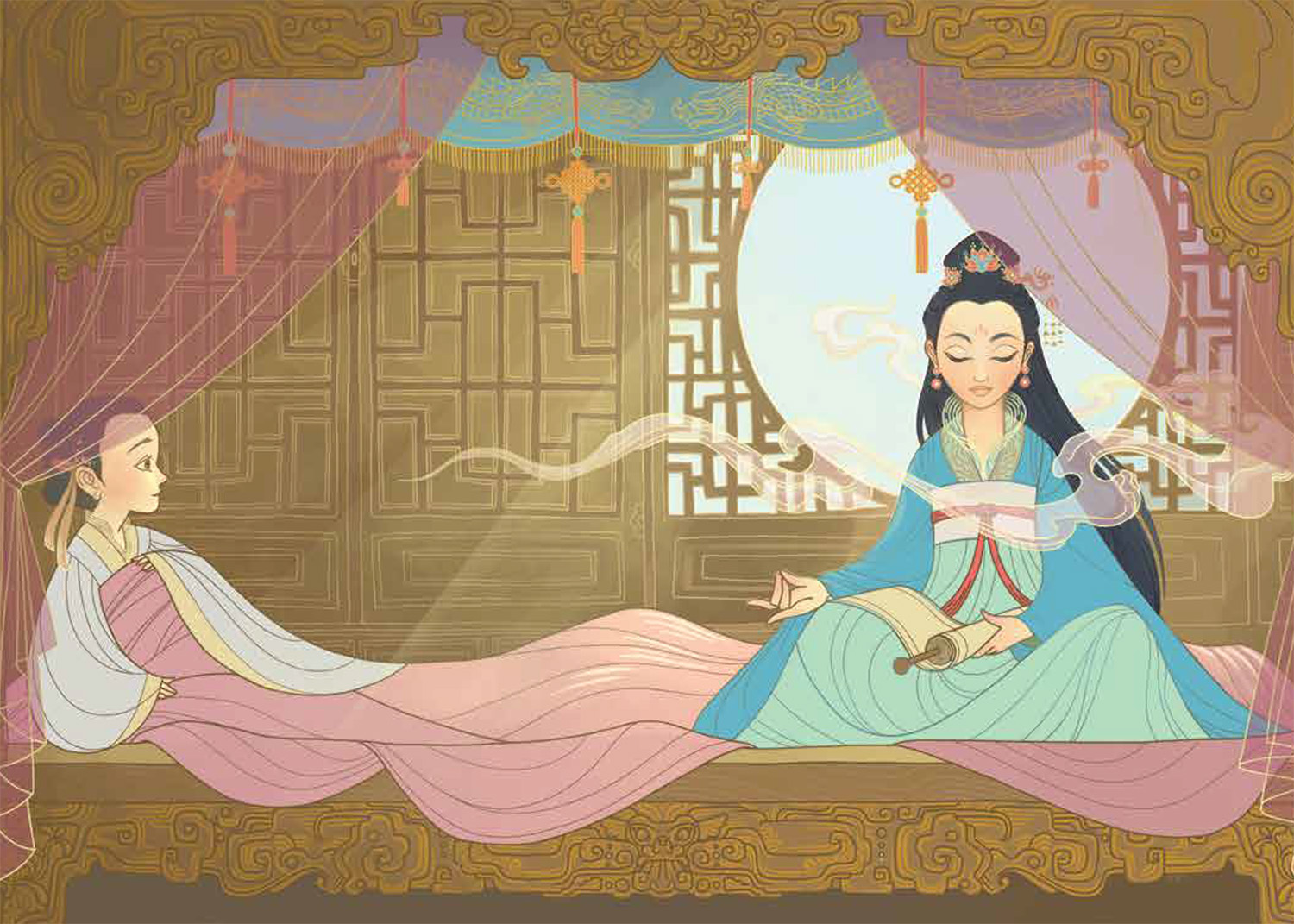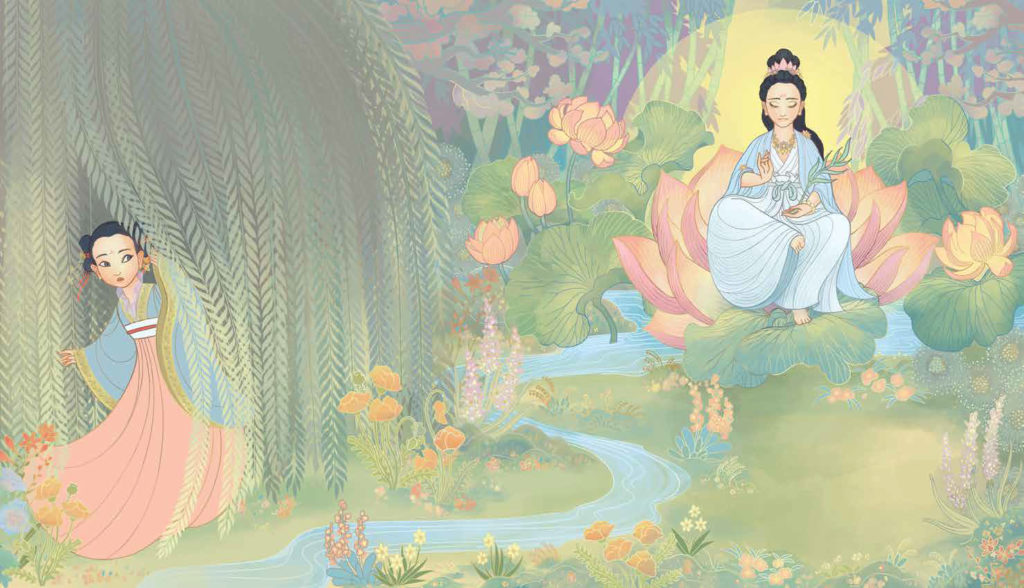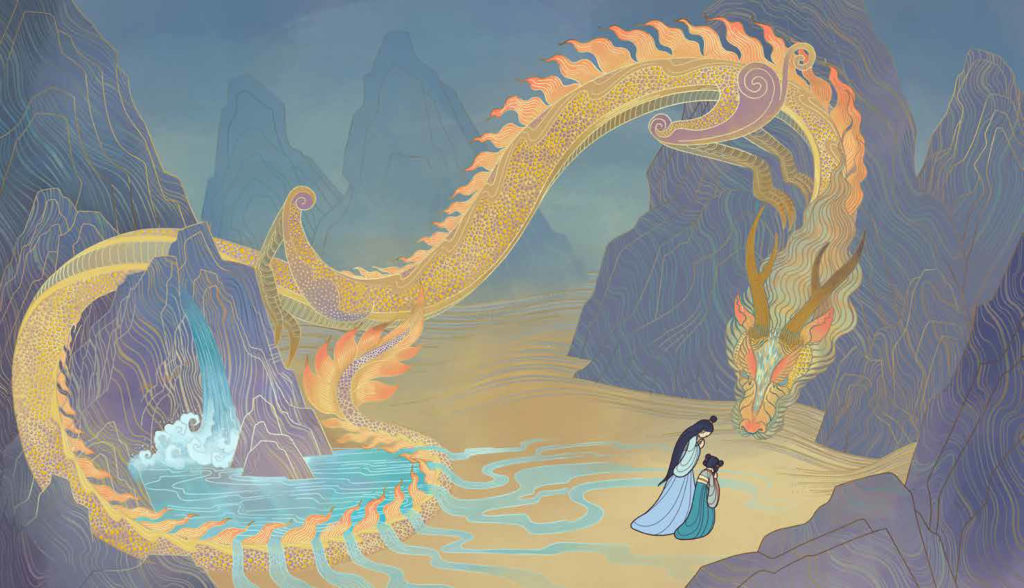The Power of Love Is Always Available

About This Resource
Details
This week marks the publication of the enchantingly beautiful, tender-hearted, thrilling children’s book debut from Maya van der Meer: Kuan Yin: The Princess Who Became the Goddess of Compassion, from Bala Kids. We spoke with van der Meer about the inspiration behind the book, how it came to fruition, and the value of stories to engage the minds and hearts of children.
What inspired you to write Kuan Yin?
The book Prince Siddhartha: The Story of Buddha by Jonathan Landaw was a book I loved as a child. It was life-changing, actually. It addressed so many of my burning questions about the nature of life that no one or no other story had before. I secretly became a Buddhist after reading that book!
As an adult, I looked for stories about female meditation practitioners for inspiration. I found stories of women like Tara, Yeshe Tsogyal, and Mandarava who, similarly to Siddhartha, left their royal life to follow a path of spiritual awakening. I wished I had had their stories as a child too. Whenever I read Prince Siddhartha to the children I taught, they also wanted more.
Children have such deep inner lives and struggles we can’t see, and picture books are a wonderful gateway into their inner world. So, I would say my own experience as a child and my experience working with children in a deep way is fundamentally what inspired this book.
Children have such deep inner lives and struggles we can’t see, and picture books are a wonderful gateway into their inner world.
Why did you choose the story of Kuan Yin in particular?
When I was approached by Bala, I had the idea of writing a princess hero story, but it wasn’t until I actually started researching that I discovered the story of Princess Miao Shan for the first time. I was shocked that I didn’t know this origin story of Kuan Yin! It was so potent, moving, and rich that I knew I would have a lot to draw upon to create a story for a children’s book out of it.

Kuan Yin tells the story of Chinese princess Miao Shan who becomes Kuan Yin, the Buddhist deity of compassion. There are so many tales and cultures to draw from to tell the story of Kuan Yin; how did you go about creating your version of this story?
First, I took what little I knew, the basic outline of the Miao Shan legend, and I began to contemplate it. I bought a statue of Kuan Yin riding a dragon and made water offerings—the element most associated with the Bodhisattva—every day. Then, I went deep into my imagination and wrote the first draft of the manuscript. After that, I discovered The Precious Scroll of Fragrant Mountain in my research and layered in some of the imagery of that to lend more authenticity to the work.
I really love Ling and the bond between the sisters. I didn’t realize it until after the book was finished, but that came from my deep love and connection with my younger sister, Chelsea.
Because I had to keep the word count to 2000 words, I shared passages with Wen for her to add details in the illustration. The origin story is actually quite harrowing. I retained the sense of the adventure, but I had to omit many details that were not suitable for young children. So, I took creative liberties to create a modern telling, but remained faithful to the source text, which was important to me.
What is your favorite thing about the book?
I really love Ling and the bond between the sisters. I didn’t realize it until after the book was finished, but that came from my deep love and connection with my younger sister, Chelsea. She was actually visiting me in the Summer of 2020 when, two years after writing the original manuscript, the PDF proof arrived. We were sunning ourselves by a stream with small waterfalls when we looked at it for the first time together and I realized that she is Ling!
The character of the sister is not from the traditional story; why did you choose to add her into the story?
I felt the story from Miao Shan’s point of view would be harder to relate to, so I chose to tell it through the eyes of her younger sister. In the legend there is no younger sister. Miao Shan has older sisters and she is the youngest. But I wanted Miao Shan to have a witness, a support, and a reason for doing what she was doing, in this case staying in this world after her enlightenment to be there for her sister who needed her and all beings.

- Related Resource: Golden Dragon Twirlers
The art is a beautiful and atmospheric complement to the text of the book. How did you and illustrator Wen Hsu approach your collaboration?
I believe that Kuan Yin led me to Wen. There is no other way to explain it. It is not common for an author to choose her illustrator, but I knew this work required a sensitive person with an affinity to the story and the culture. How do you find that?! I had access to the creative agency that Bala works with, but in the end I did my own Google search: “Female Chinese Illustrator,” and, somehow, I found Wen, who has almost zero web presence. She checked all the boxes and then some. Her range and skillset is astonishing. So I miraculously found her email address and wrote to her. This is how she replied:
“I was telling my husband and boys last week, as we passed by a temple here in Hanoi, about Kuan Yin. She was my favorite among the Bodhisattva in the Taiwanese temples I visited as a child. She was also present in the bedtime folktales my own father told me and my sisters when we were very young. And just this morning I was reading about the mother archetype in one of Jung’s books. I can sincerely say I am amazed at how all these seemingly arbitrary dots have all connected with your email and now they suddenly make sense!”
And so, the collaboration began. Wen graciously agreed to provide some sketches of how she might illustrate Kuan Yin and Ling to the Bala team and she was then officially brought on board.
I want children to know that the power of love is always available to them no matter what difficulties they face. I want them to choose to call on the compassionate forces of the universe to assist them to become heroes themselves.
Wen and I both have a love for history and authentic details and we geeked out a lot about the Tang Dynasty, and also the source text I mentioned earlier. I always had complete faith that she would blow everyone’s minds. And she clearly has. I am so immensely grateful to her.
- Related Resource: History and Symbolism in Kuan Yin
- Related Resource: How Many Animals and Mythological Creatures Can You Find?
What message do you want to convey with the story? What value do you hope to bring to children’s lives through Kuan Yin?
I think all children are born with the knowledge that love is the greatest power in the universe. When they inevitably experience the separation from that love it can be so confusing, painful, even traumatizing. I want children to know that the power of love is always available to them no matter what difficulties they face. I want them to choose to call on the compassionate forces of the universe to assist them to become heroes themselves.
Do you plan to write more children’s books in the future? If so, do you have particular themes or messages you feel inclined to focus on?
Yes, I have plans to write more princess hero stories. I am currently working on the origin story of Green Tara. This one will be from point of view of the bodhisattva and focus on the superpowers of those who possess extraordinary powers of compassion. I also am working on a manuscript based on the Buddhist parable of The Four Friends that has a strong environmental focus on the need for us all to work together to protect our planet’s biodiversity.
Images copyright Wen Hsu.
Related Resources
Middle Way Education Digital Library
Generating Tara
Book Review: Prajapati
Book Review: Where’s Buddha?
About The Contributor
Maya van der Meer talks about her new children's book that tells the story of Kuan Yin, the Buddhist deity of compassion.
